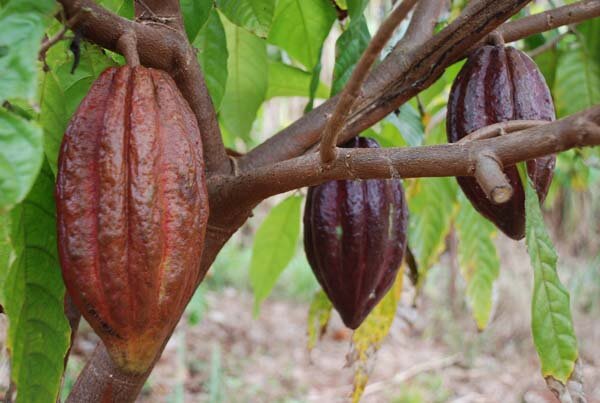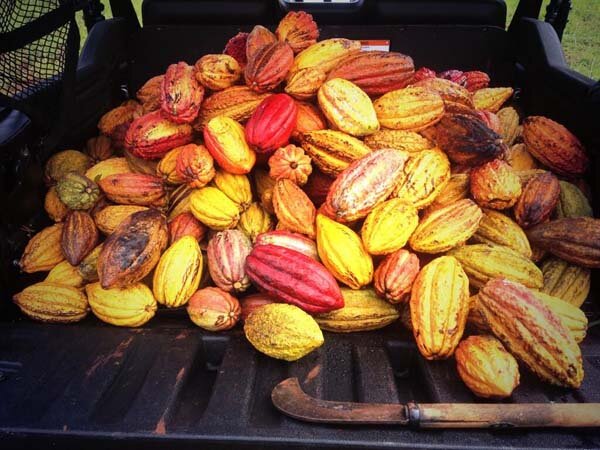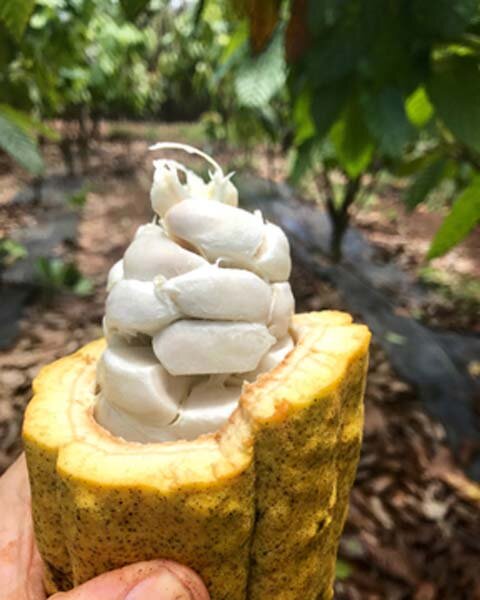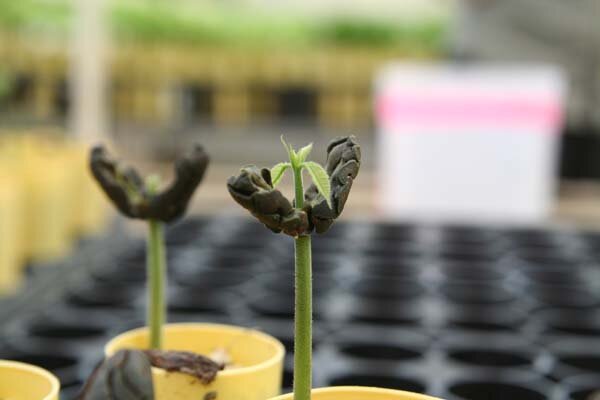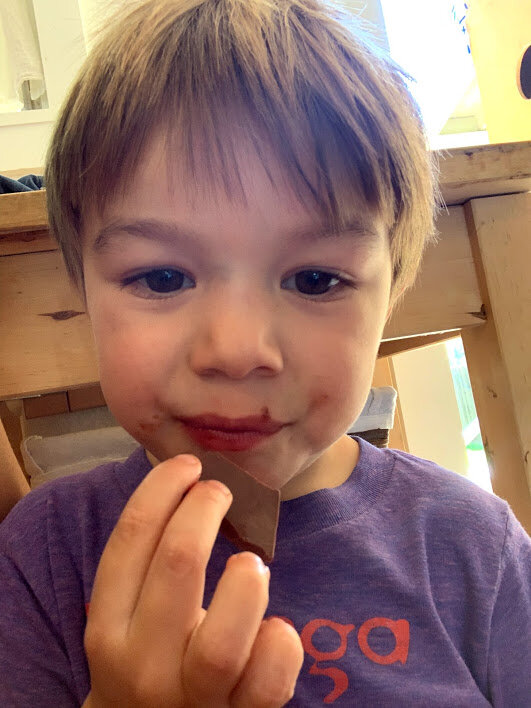K&L and the Chocolate Factory
Times are changing, and K&L is changing (a little) too. We still bring you the best booze the world has to offer, but now you can order some of the best chocolate as well! We’re now the proud purveyor of Lonohana Estate Chocolate from Hawaii. And it’s not just any chocolate: it’s creamy, complex, delicious—and, for all us wine lovers, there’s a real sense of terroir expressed in each bar.
Lonohana chocolate is grown and made by Seneca Klassen and Lawrence Boone, childhood friends from Monterey who set out to reinvent the chocolate world. They wanted to be a part of each step of the chocolate process—and, from finding the land to propagating seeds to planting the trees, they’ve built their company from the ground up. Seneca’s been in the chocolate industry since the 1990s, and he’s occupied just about every position the biz has to offer: chocolate cafe owner, importer, teacher, maker from purchased beans. The next step for him was to integrate the whole picture. Lawrence and his wife are both in the wine industry, so starting an estate-grown cacao project wasn’t entirely different than what Napa did over 50 years ago. They jumped on board.
Seneca’s vision included paying a living wage and doing everything by hand with complete transparency. He made friends with farmers, leased a piece of land, experimented with seeds from all over the world. It rains all year round, so that first year they were weeding nonstop. “There was no one we could call for advice,” Lawrence says, “No chocolate growing industry leaders to provide guidance.” Now, several years into chocolate making, they know what they’re doing and control for quality at every step. They do multiple harvests to pick for perfect ripeness, then do a temperature-controlled native-yeast fermentation for the beans. They have their own chocolate factory and a small tasting bar (currently closed during the quarantine).
Though wine drinkers might take this type of integration for granted, it’s quite unusual in the chocolate industry. At the time when they planted their estate, there were something like 8 other people in the world making estate-grown chocolate. When Lawrence told me this, I was genuinely shocked. I mean, everyone loves chocolate. This is the age of craft industries. Why isn’t every upstart farmer planting cacao? The story is indeed fascinating, and the more I spoke with Lawrence, the more I realized I know nothing about the chocolate that I eat.
The story is long and dark and political, leading us to the point where 98% of the world’s chocolate production is controlled by 3 companies, and a lot of what’s on the market is filled with additives. There is indeed a craft chocolate movement, but the vast majority of producers are purchasing beans from growers, somewhat like in Champagne before the grower-producer movement. Lawrence says, “Everybody eats chocolate, and nobody knows anything about it. It’s a fruit. Comes from a tree. It’s a ton of work and labor. Not cheap to make. We’ve come to expect cheap chocolate. By doing it ourselves and paying Hawaiian living wages, we are trying to show that this can be done and can be a successful business for Hawaii. It’s hard but we make really good chocolate.”
There’s a limited area where cacao can grow—much more limited than wine. Lawrence and Seneca planted their farm on the island of Oahu, nearly the farthest north that you can grow cacao beans, at the 20th parallel above the Equator. You can taste this “cold climate” in the chocolate, especially in their Estate 70% Cacao Dark. There’s a bright, lemony acid with delicate floral notes and a hint of buttermilk. It’s incredibly creamy, especially for a 70% dark chocolate (the other 30% comprising organic sugar). Lawrence attributes the creaminess to this cacao’s response to the colder climate: the tree pumps more cacao fat into the beans to survive the cold.
Crowd-pleasing chocolate!
Their Salted Milk retains that acidity but hits an earthier bass note with a hint of sexy spice. It’s no wonder this is their best seller, it’s incredibly crowd pleasing (it pleased my crowd, i.e., my husband and two littles). It’s 50% dark and 50% milk with Hawaiian sea salt, and it is divine. In their Hibiscus Dark Milk bar, they add the element of Hawaiian Hibiscus flower to that dark milk recipe for an ethereal floral note. Every ingredient they use is from Hawaii, and their flavored bars capture essences from the islands.
This is gorgeous chocolate, and the business is setting the path for a real, sustainable chocolate industry in Hawaii. You can buy it for the feel-good factor or for the taste-good factor, but either way, this chocolate is an amazing addition to our shelves!
- Kate Soto



